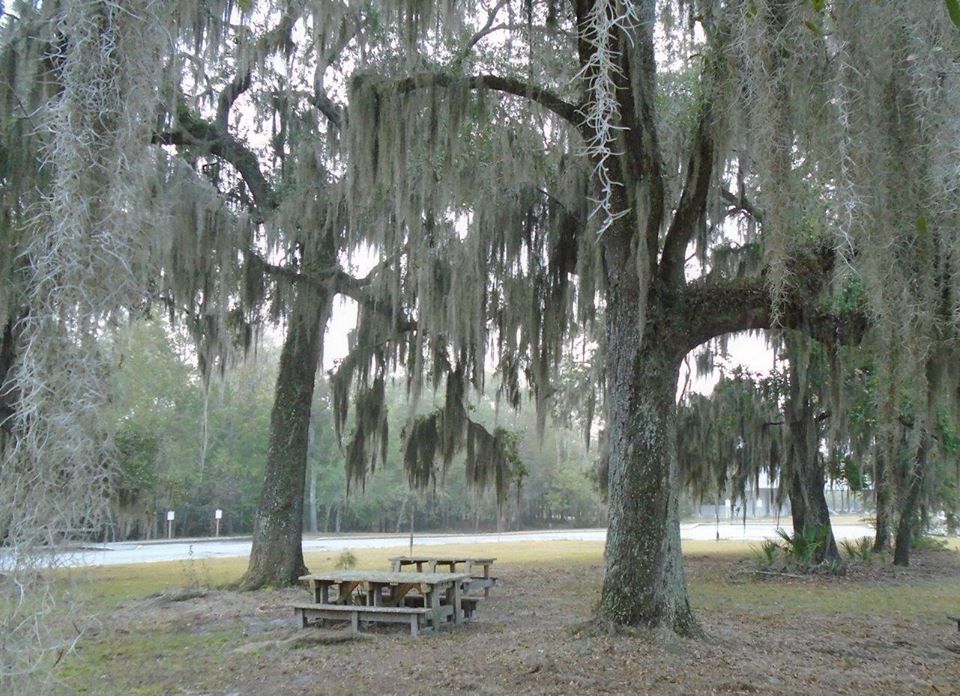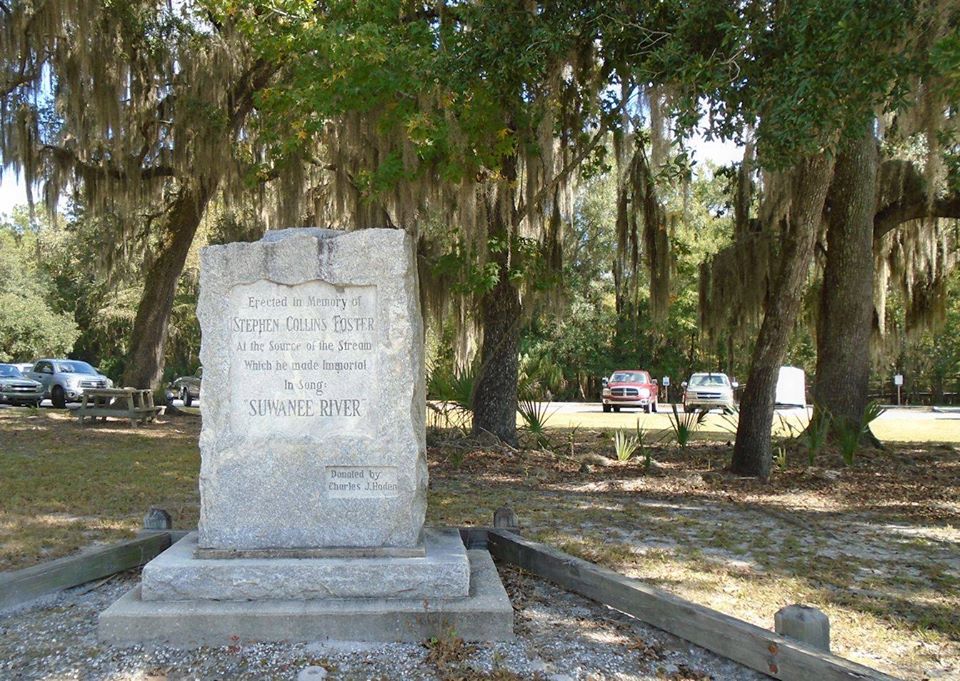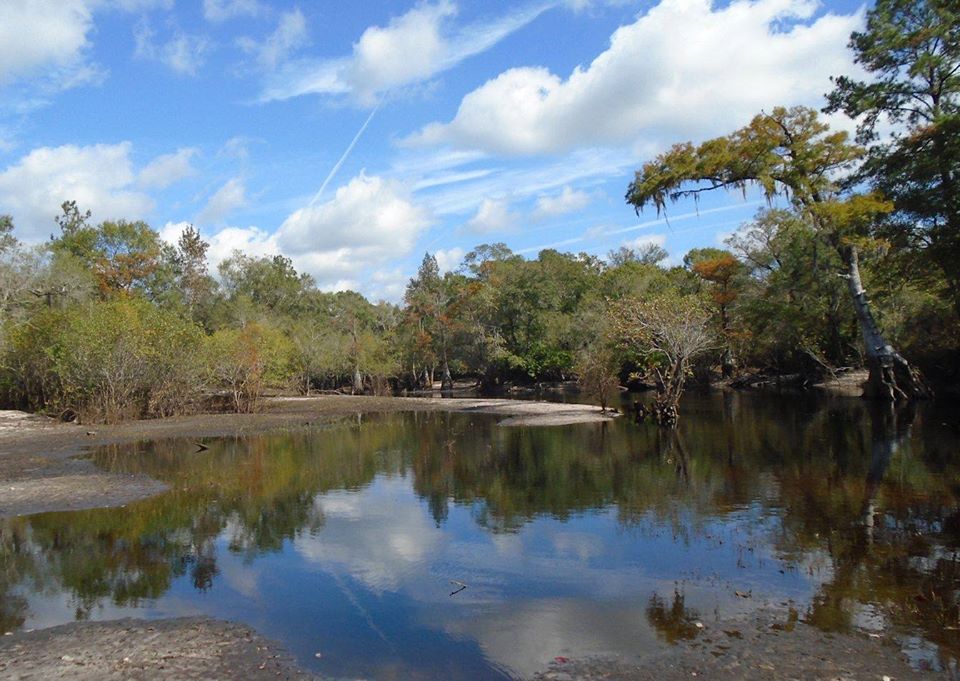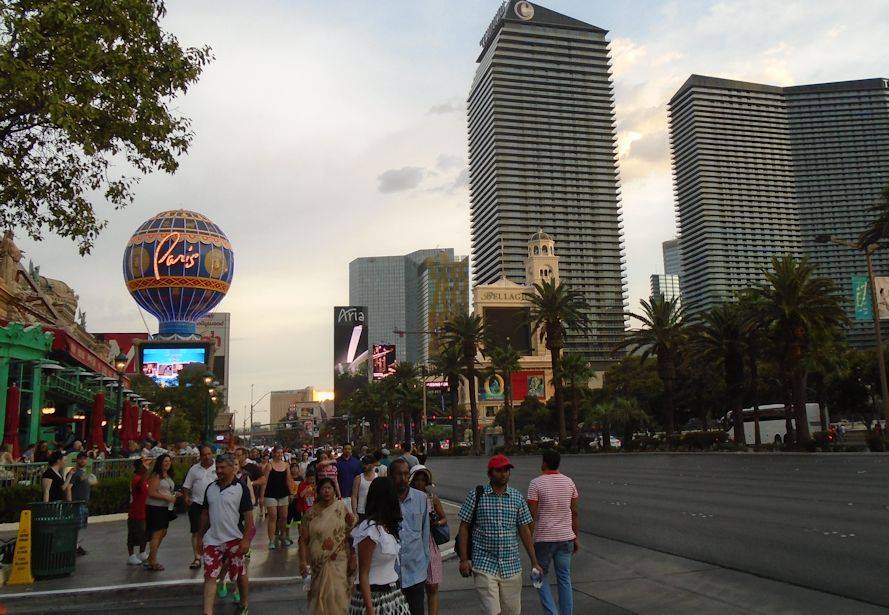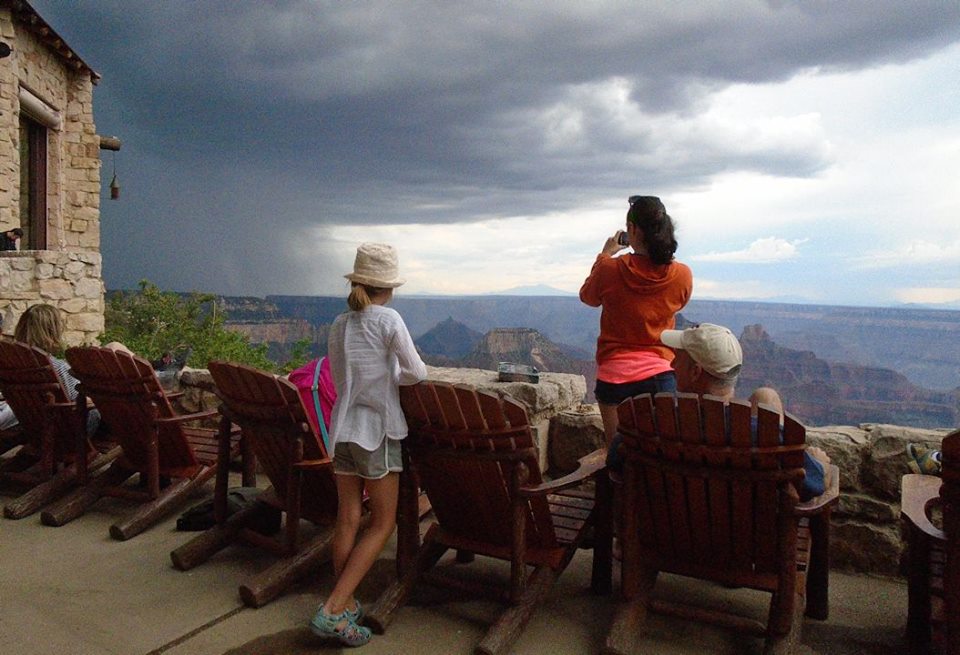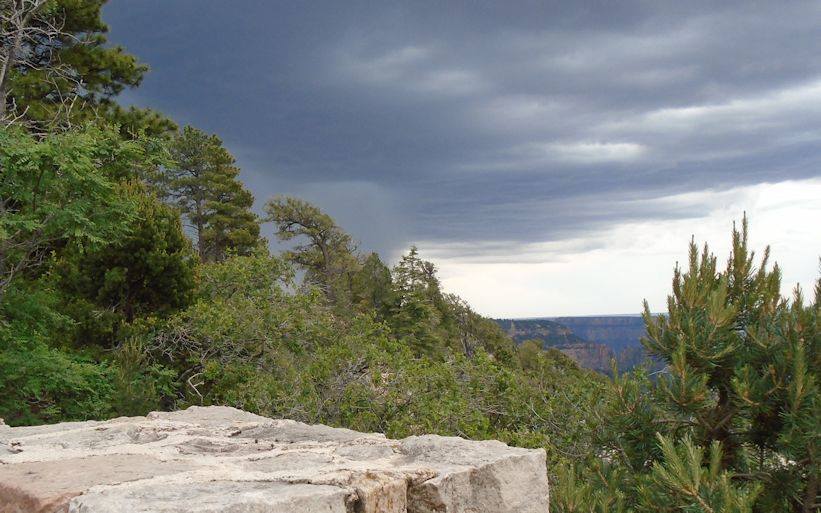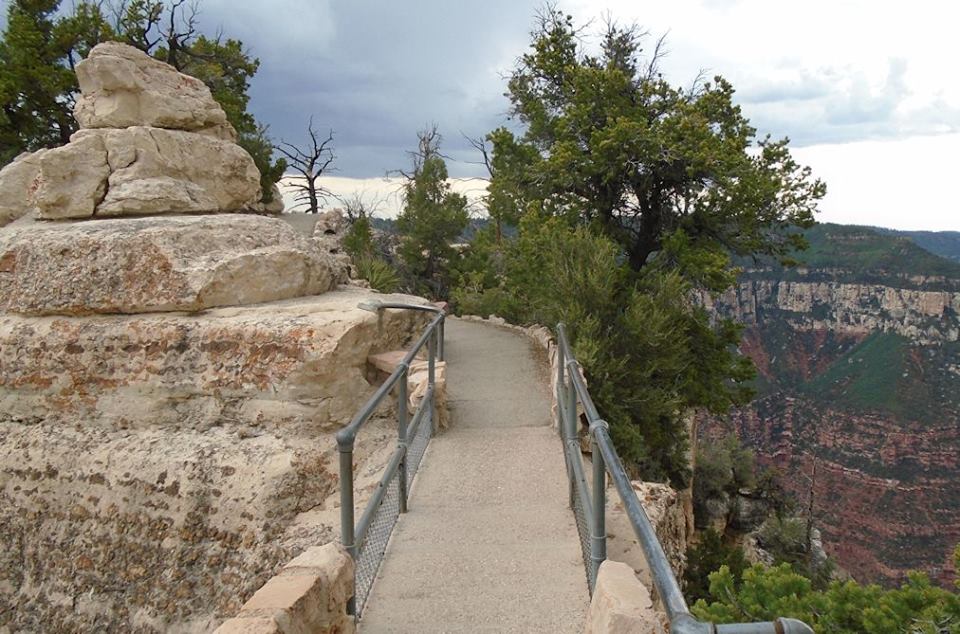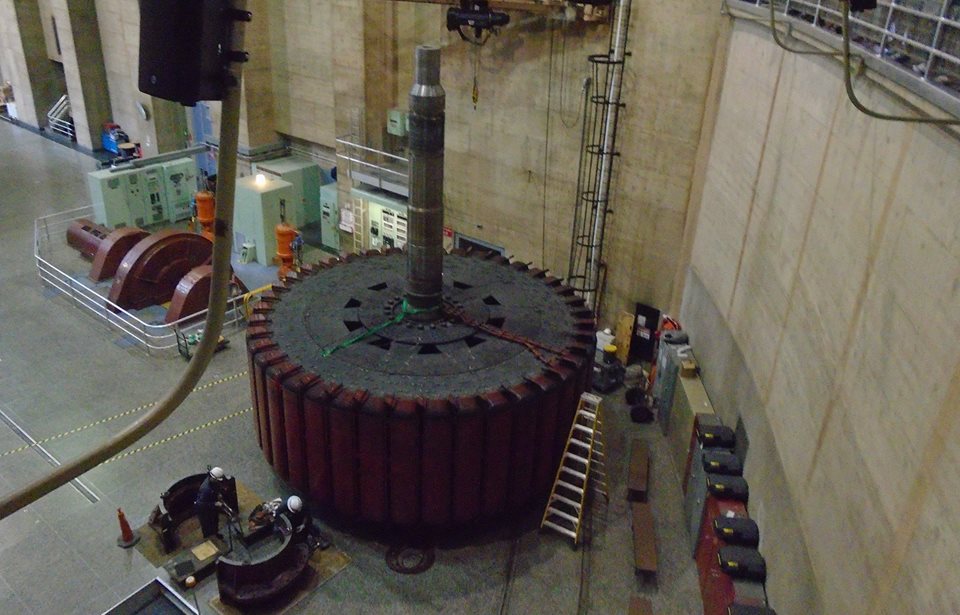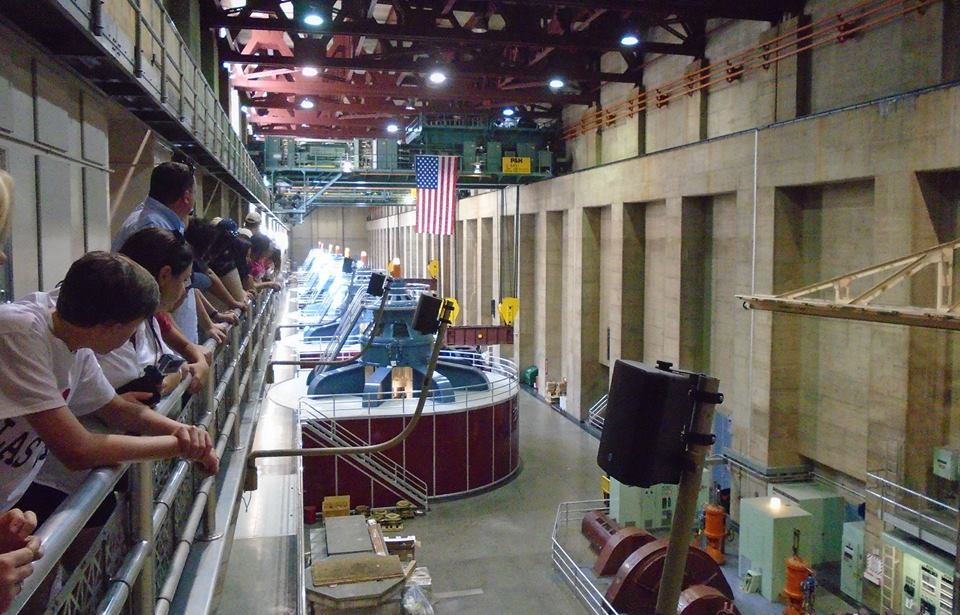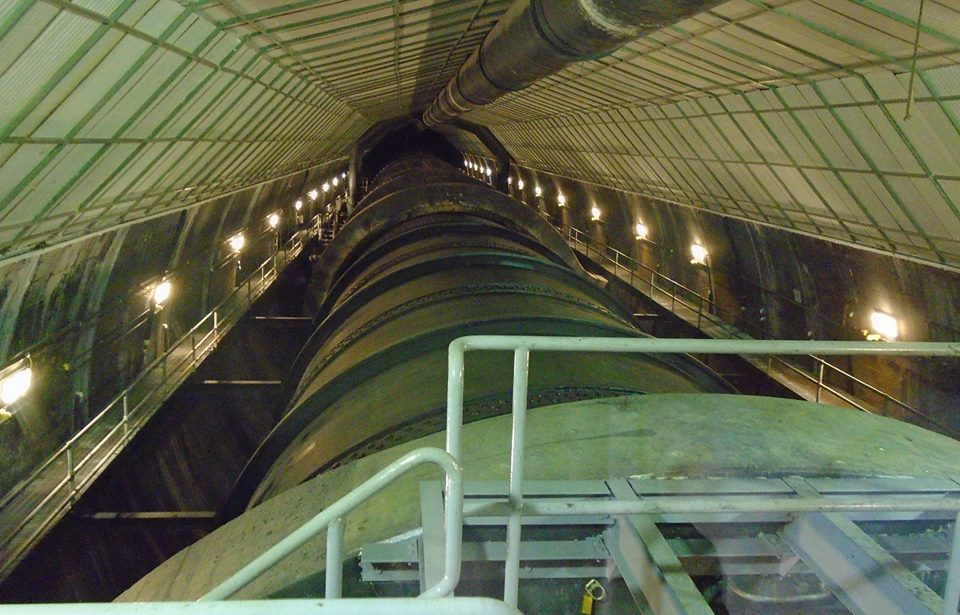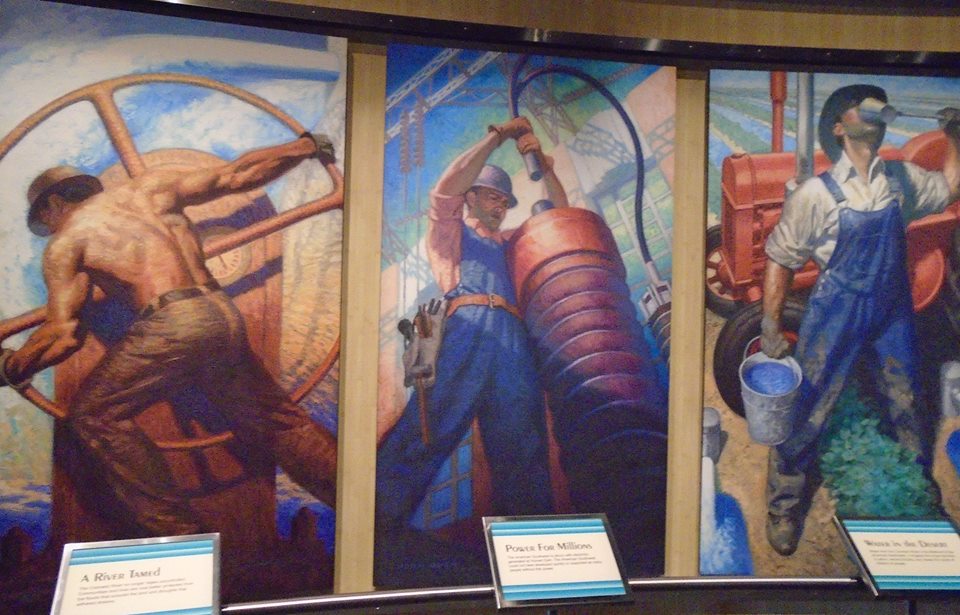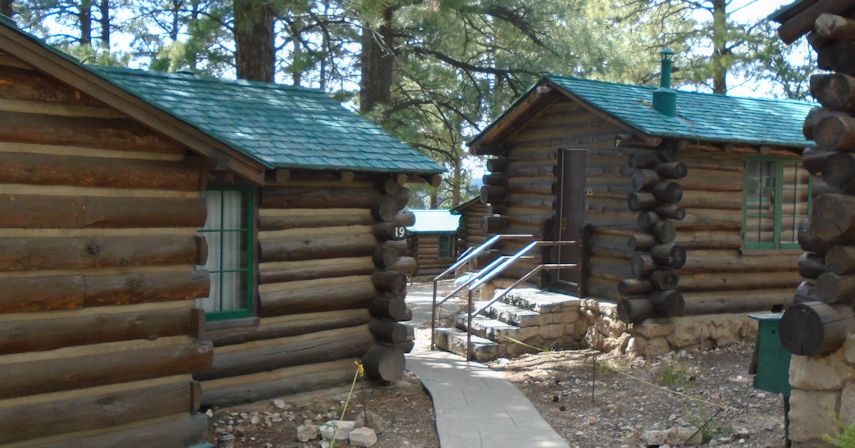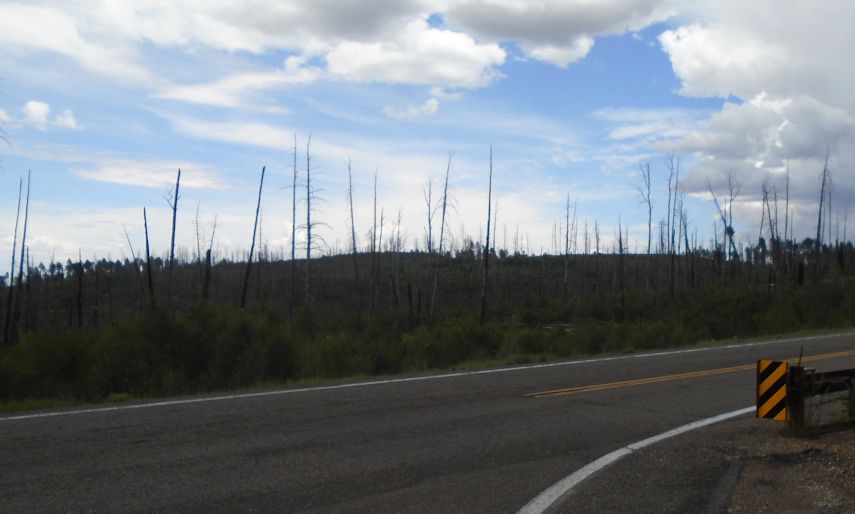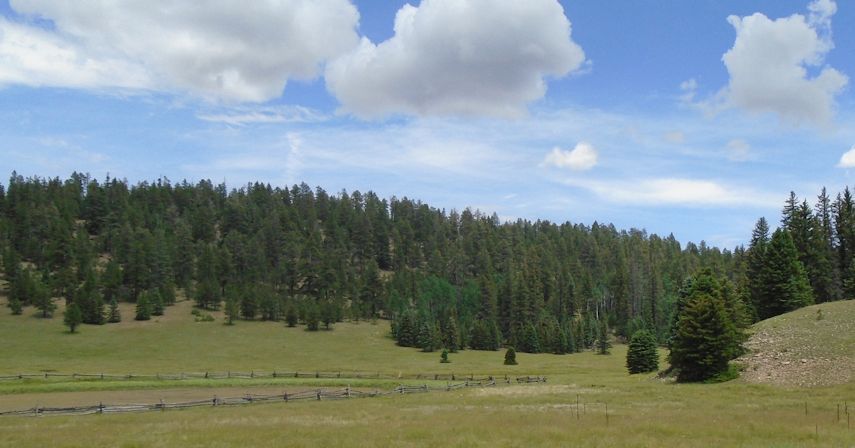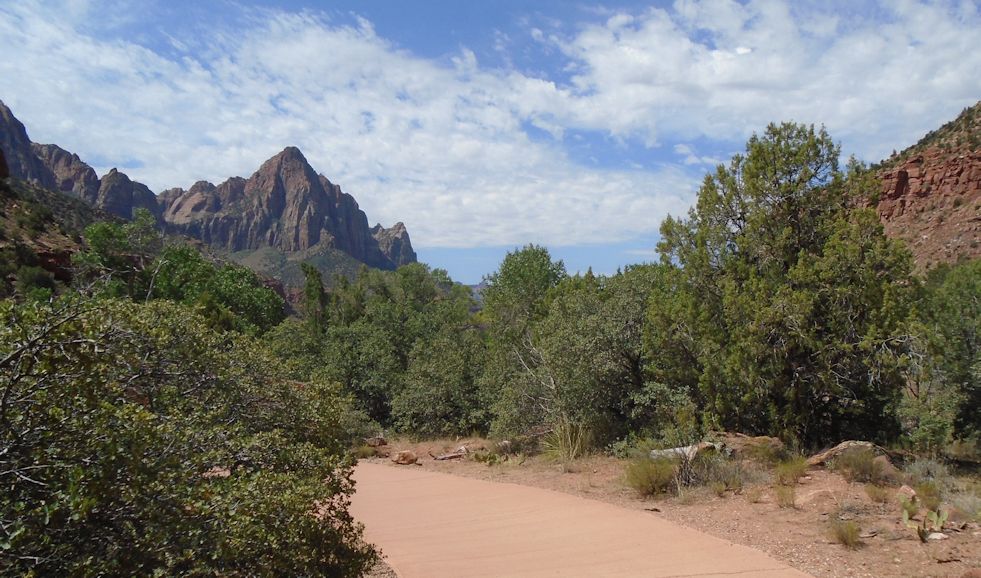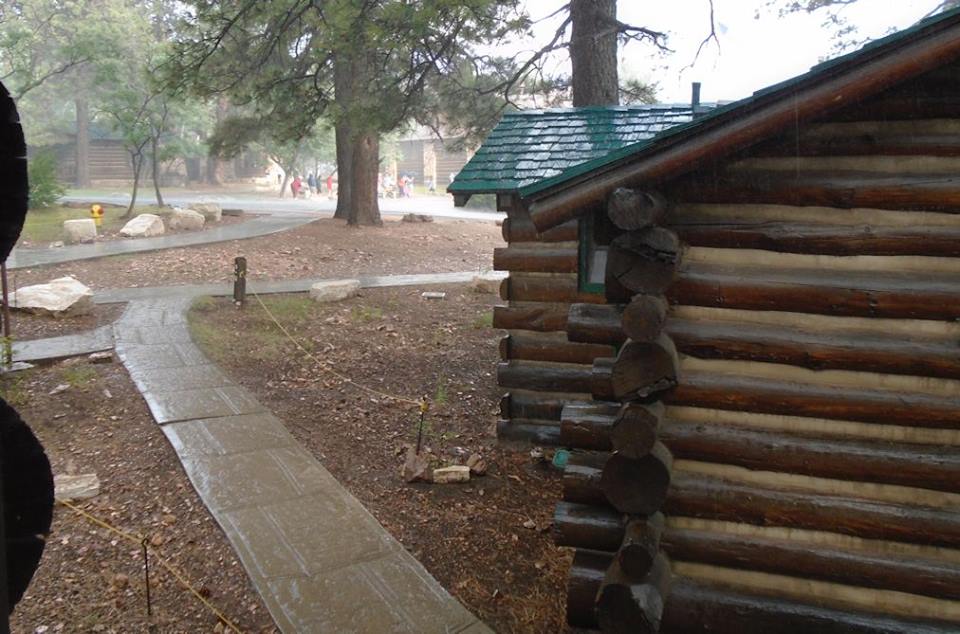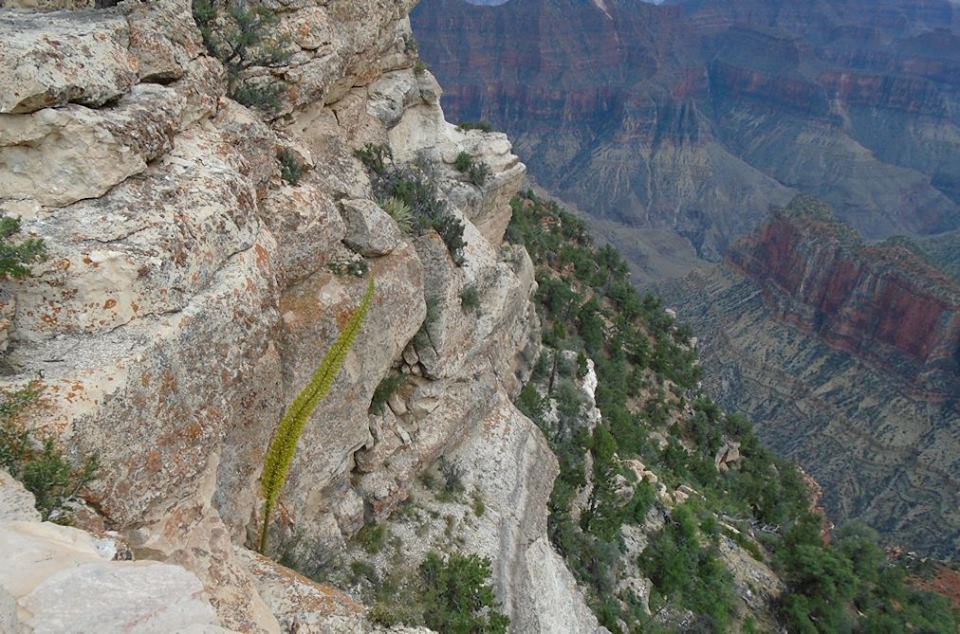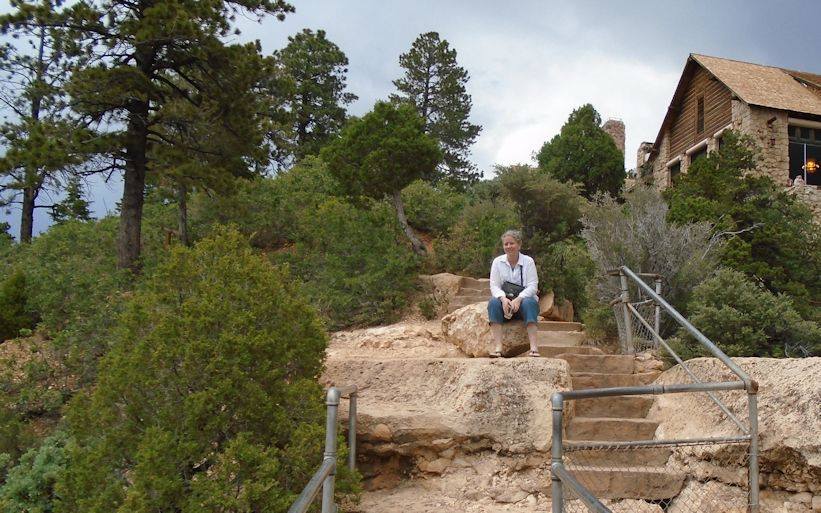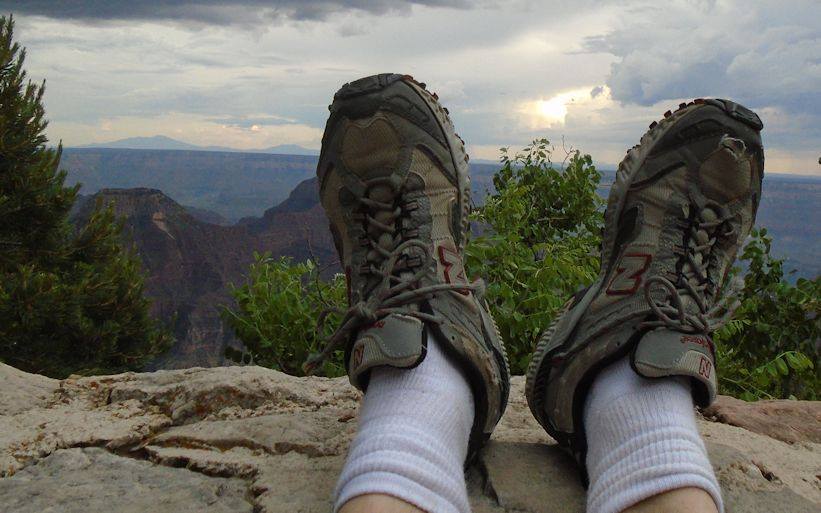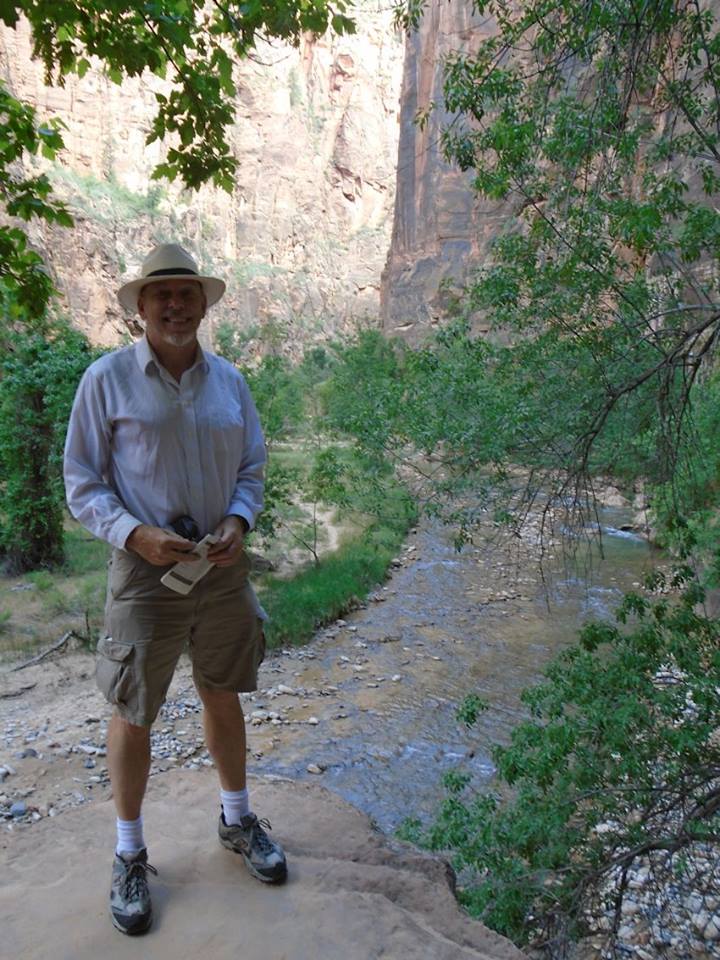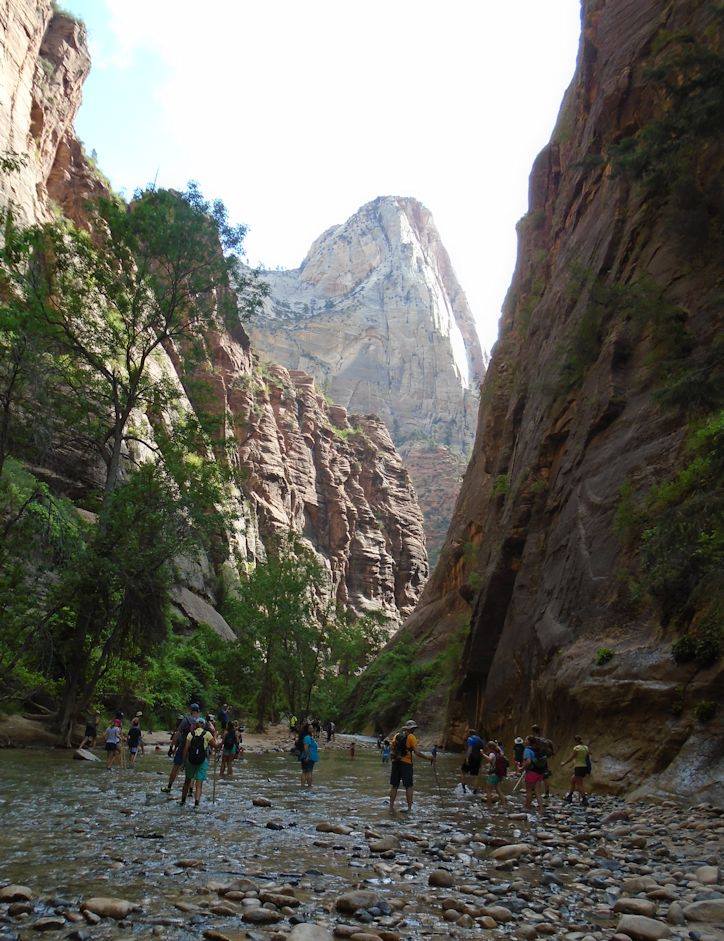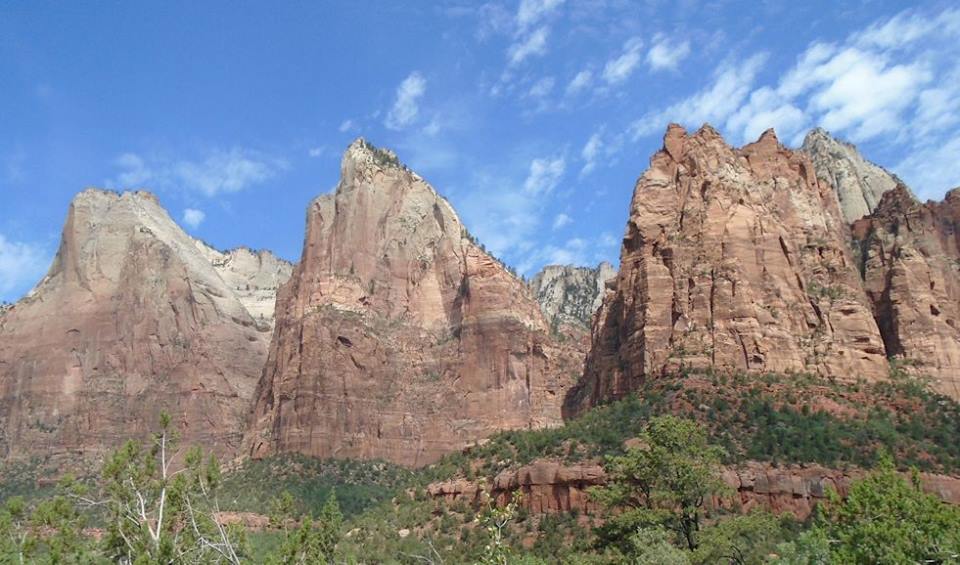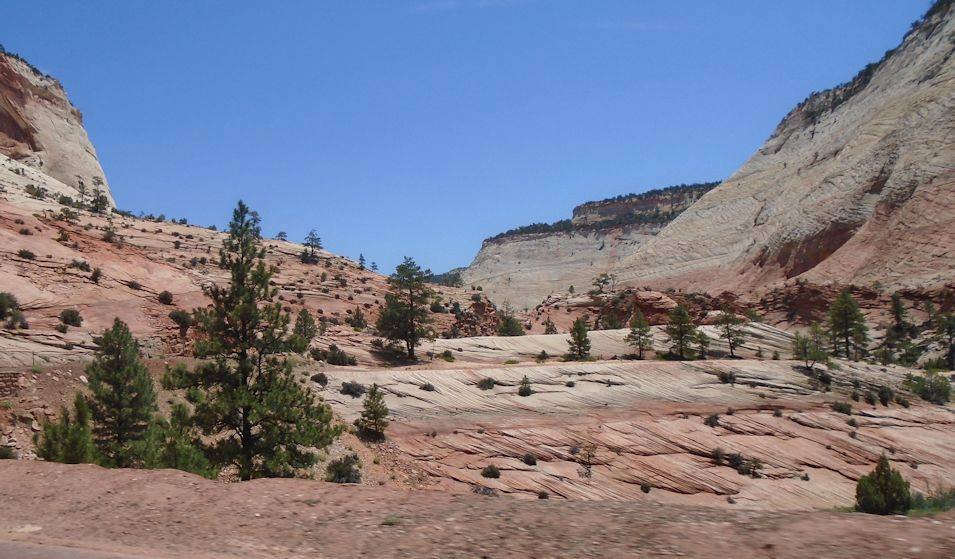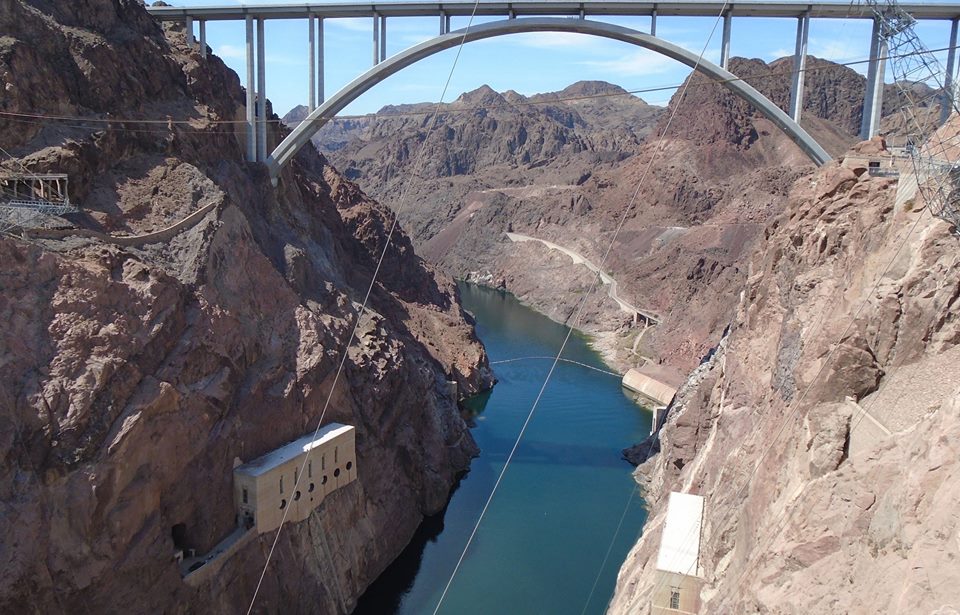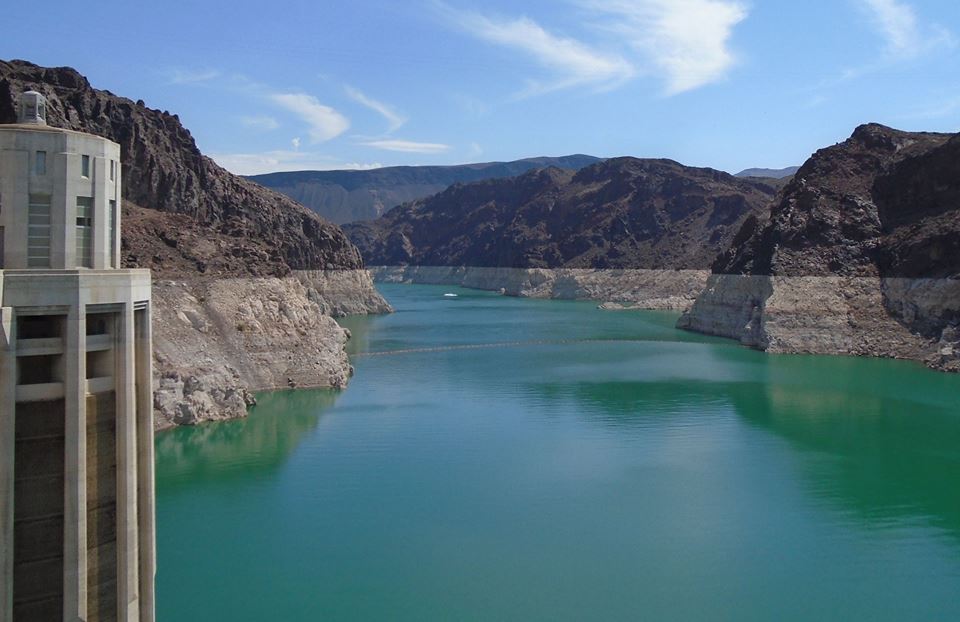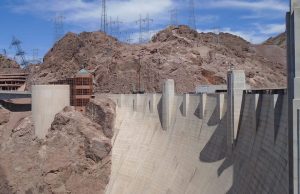“Old Folks at Home” – Way Down Upon the Swanee River used to be the state song of Florida, but the Suwanee (the original spelling) actually starts in Georgia. Stephen Foster had never visited the river or knew anything about it. She just needed a name to go with his song.
We had lunch at the Suwanee visitor center. You can tell by the way the building is constructed that they get some flooding.
Forest visits September 2015
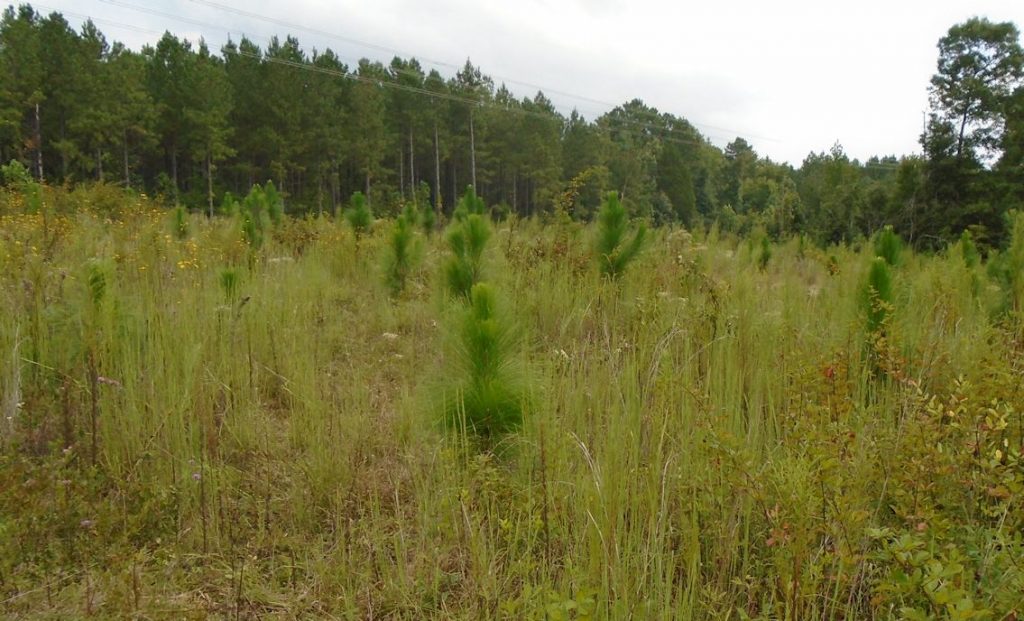
We went down to the farms to plant clover on the new cut over, especially on near the trails, where there is more bare dirt. I was surprised how much had grown up by itself since the land was cut in July. Some is hardwoods sprouted from roots, but other plants are coming up from long-dormant seeds. The clover will hold the soil, provide nitrogen and be good wildlife forage. We will plant new trees in spring, about 400 per acre, thirty acres loblolly and fifteen longleaf and one acre of bald cypress. Loblolly will also seed in from the neighboring trees. In fact, left to their own devices, the loblolly would fill in by itself. It would take a little longer and we would not have the same quality trees, however.
Espen, Alex and Colin helped throw the seed. We did it by hand mostly as a form of performance art. I wanted them to be a part of the regeneration. Probably by the next time we do it, drones will handle much of the job.
I also did some work on our longleaf pine experimental plot. We have about five acres planted in 2012. The trees are doing okay. They have moved out of the grass stage (longleaf look like tufts of grass sometimes for a couple years before the bolt out) and some are now around eight feet high. They did a very good job o site preparation, so there is not too much competing hardwood. I did have to take down a couple dozen volunteer loblolly, however. It is kind of sad for me. If those same trees were growing a little distance away I would be delighted to have them.
It is hard work and I am getting a little too old and weak. The next day there were few places on my body that didn’t hurt. I still do the work with hand tools. I suppose I could succumb to modernity and get tools powered by something other than my aging and now aching muscles.
The first picture shows the little longleaf, now in their third year on site. Next is the new clear cut, 46 acres that we will plant next spring. After that are 19-year-old loblolly across from the longleaf. They were thinned in winter 2010-2011 and I think we will do a second thinning in 2017. The first thinning did them a lot of good and the forest is very robust. The last picture is our place on SR 623. The wildlife meadow has quail. Those tree are 11-years-old loblolly. When we got the place, it looks a lot like that clear cut. You can see the forest evolution in the pictures.
Las Vegas
Just a little out of sequence here, since we are back in Washington.
I took the Las Vegas Monorail to the end of the line, which is the MGM Grand, and walked back along the strip. Since I started at about 8:30, it was hot but not too hot.
Las Vegas has ersatz versions of almost everything. There is Paris, New York, Venice, among others. I passed a store that just sold M&Ms and M&M products and a Coca-Cola store. Neither was open at the time I passed. Good things too. The M&Ms would have melted in the bag. I did get a Coke Zero at the nearby vending machine and managed to drink it before it assumed hot air temperature. You have to stay hydrated in the hot, dry weather.
I can understand why some people like to live in Las Vegas and even more like to visit. It is built to entertain. I liked to visit, but I would not want to live here.
One of my favorite commercials is the Dos XX, with “the most interesting man in the world” I am not a big fan of Dos XX, but I am sometimes moved to buy a bottle just by the advert’s influence. I saw a poster parodying the “what happens in Vegas stays in Vegas” slogan. It has the most interesting man with the caption, “What happens in Vegas is reported directly to him.”
At home in the Grand Canyon
The Grand Canyon feels like home and it has since the first time I visited. I had a View Master when I was a kid and not very many many reels. Among them were a couple on the Grand Canyon. I looked at them a lot and so everything here seemed familiar from the start. This is my second visit to the North Rim. The North Rim is 8000 feet, about 1000 feet higher than the South Rim. It is cooler on this this side gets more rain, so there are more forests. I will write a note about that later.
Pictures, however, cannot do it justice. It is just one of the most strikingly beautiful places on earth and very interesting in multiple dimensions. Start with the actual multiple dimension of the rocks.
The Colorado River eroded through rocks that show millions of years of earth history. You can see it in the bands of different rock. The Colorado Plateau was once under the ocean. You can see that in limestone. It was a desert. You can see sandstone. It was a swamp, a forest and most other things and the evidence is in the rocks.
A couple of interesting facts. Most of the earth’s surface is made up of igneous rock, but much of the land surface is covered by sedimentary rock, so we think it is more common. The most common type of sedimentary rock is shale, which is essentially compressed & transformed mud, but the one we see the most is sandstone, since it stands out in cliffs and buttes. Sandstone, as the name implies, is compressed & transformed sand, but there is often shale underneath or holding it together. Limestone makes up around 10% of sedimentary rocks. It is made from the skeletons and shells of sea creatures and coral. That is why there are often fossils. And one more little fact. You do not find dinosaur fossils at Grand Canyon. I mentioned the layers. Evidently the Mesozoic layer was soft and washed away. There are lots of dinosaur fossils at the Vermillion Cliffs, which you can see from the Grand Canyon when the air is clear.
Above are a few pictures. The top you see that most of the good picture places are taken by others. There were strong thunderstorms at the Canyon. On the way up it rained so hard we had to drive very slowly and considered stopping as sheets of water rolled down the roads. From the Canyon rim, you could see the storms and lightning at various points. Everybody was trying to get a picture when the lightning struck.
A drive along the Grand Canyon
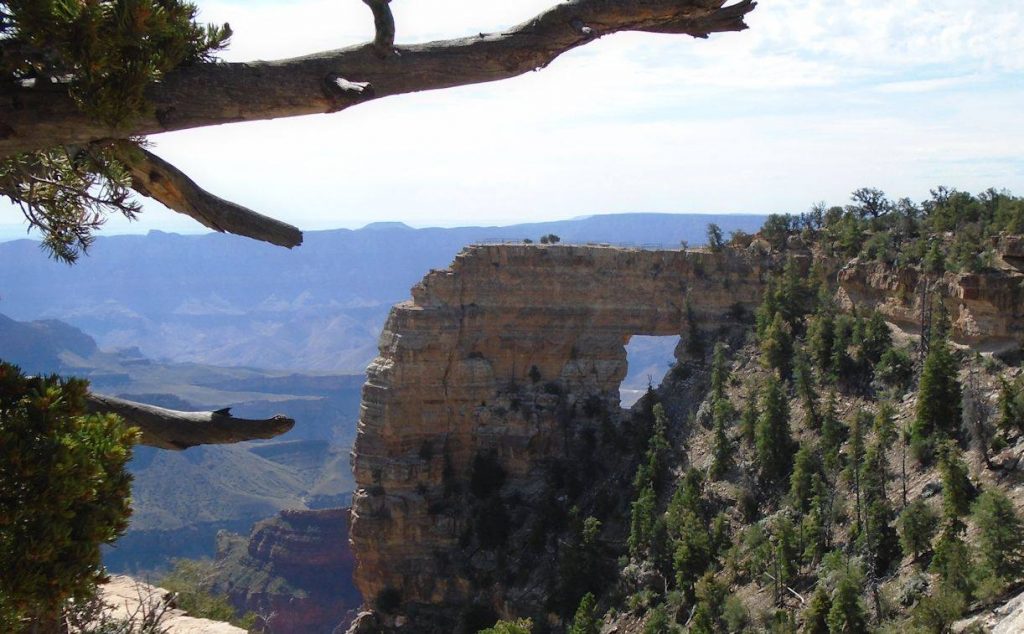 Cape Royale protrudes into the Canyon. Although it is still fairly high altitude, it is warmer and drier than the surrounding plateau. Here the ponderosa forest gives way to something more like the upper Sonora ecosystem. It features the pinyon pines, juniper and more desert-like brush.
Cape Royale protrudes into the Canyon. Although it is still fairly high altitude, it is warmer and drier than the surrounding plateau. Here the ponderosa forest gives way to something more like the upper Sonora ecosystem. It features the pinyon pines, juniper and more desert-like brush. One of the nicest things was the cliffrose, shown below. They are not attractive to look at, but they have a wonderful scent. Mixed with the juniper and the pinyon pine, it is just wonderful to walk. You could enjoy it with your eyes closed, which might, however, be a bad idea in this particular place. Notice the very interesting, but very steep natural bridge nearby. The other picture is Chrissy in “her” car. She loved that thing.
One of the nicest things was the cliffrose, shown below. They are not attractive to look at, but they have a wonderful scent. Mixed with the juniper and the pinyon pine, it is just wonderful to walk. You could enjoy it with your eyes closed, which might, however, be a bad idea in this particular place. Notice the very interesting, but very steep natural bridge nearby. The other picture is Chrissy in “her” car. She loved that thing.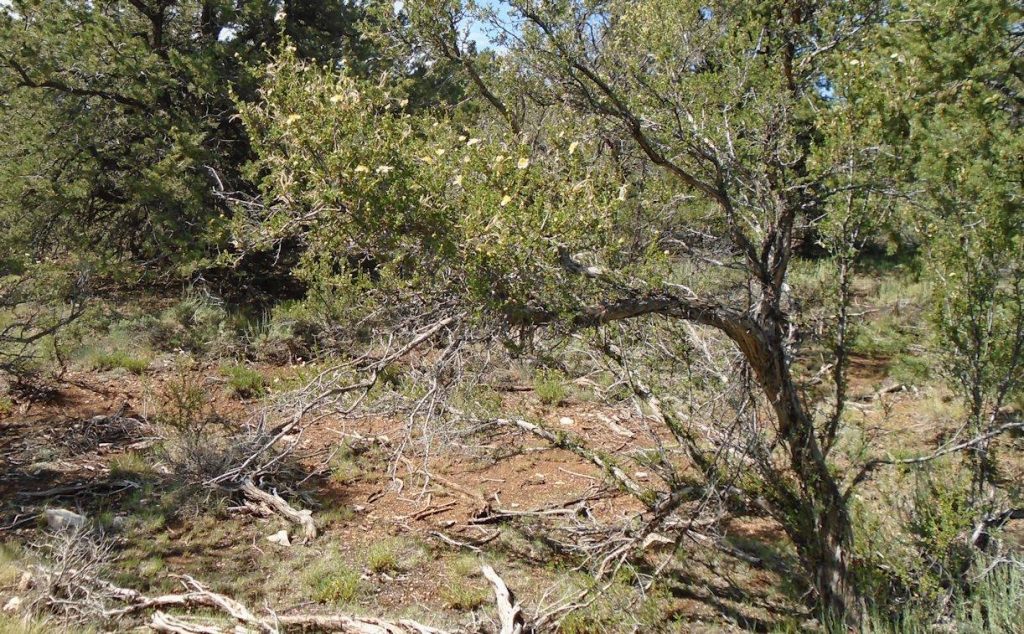
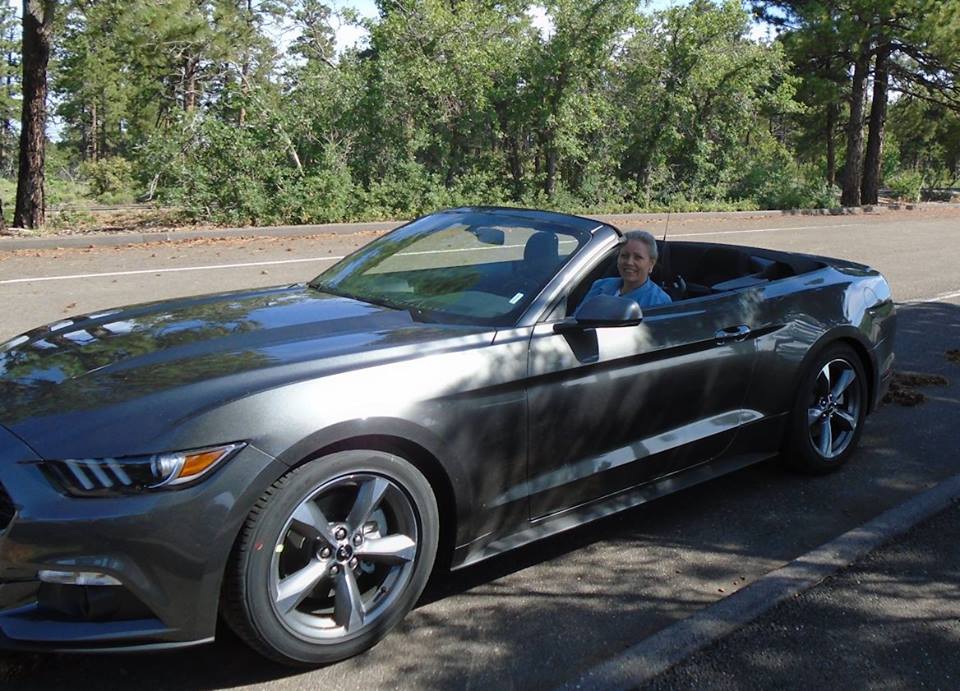
Hoover Dam
Hoover Dam was built mostly to control floods and provide water for industry and agriculture in the Southwest. But it also provides clean electrical power and the dam has paid for itself and its continued maintenance from the sale of electricity. Below are pictures from the power plant.
National parks
National Parks are such a great American legacy. They protect natural resources and are open to all. Most are in areas away from cities, however, so they do not get as many visitors as you might think. When visiting the parks, I am always struck by how many foreign tourist are there. They seem to appreciate our parks more than we do, or maybe they just stay at the lodges more often, while Americans drive it for the day. I don’t know.
Much of the infrastructure, the cabins and lodges, is old and the trails are often not perfectly maintained. I like this. It hearkens back to an earlier time, when we were a little tougher and less demanding, when you could go into nature w/o taking all sorts of high tech tools. There was no wi-fi at Grand Canyon and no TV in the cabins. The cabins are comfortable and clean, but simple. Simple is usually better in lifestyle.
I worry about the state of nature. As we become a more urban society, our encounters with nature become more shallow and episodic, maybe more cartoonish. Simple is not usually better in understanding. Nature is complex. It takes a long time to appreciate its nuances and ever changing aspects. You literally need the time and attention span to watch things grow and change.
Colorado plateau
Zion is near the edge of the Colorado Plateau, significantly cooler than the Mojave climate below. We had a nice day, about 80 degrees, low humidity. Zion has beautiful rock formations carved by the Virgin River.
The first picture is me at the Virgin River. Next are the peaks of the Patriarchs – Abraham, Issac & Jacob. After that is the valley and that last picture shows the amazing rocks.
St. George
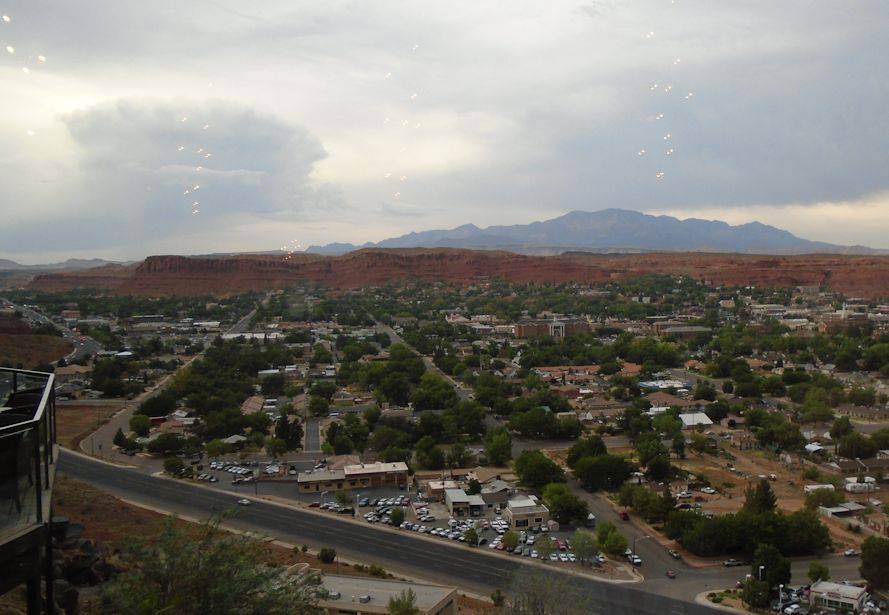
Hoover Dam
Visited Hoover Dam. It is a beautiful and impressive piece of engineering. Hoover Dam and others on the Colorado are a big contributor to the prosperity of California and the Southwest. We forget how much is really man-made. Large water works are what makes possible the large populations, industry and productive agriculture. There is no such thing as a natural resource, only natural potential.
Lake Mead is low because of the drought. The high water mark was in 1983. But there is not enough water to go around, even when the lake is full. Water has been over-allocated. More than 100% of the water has been promised to farms and cities. Worse, the allocation are based on “normal” years. Normal years are rare.

